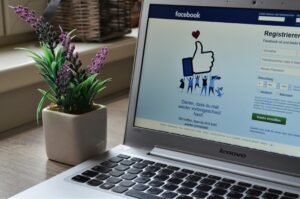I was intrigued when prompted to do an online background check of myself this week in class. Some of the things that came up included:
- Linked-In profile
- EDTC blog posts
- Facebook profile
- Obituaries of family members
- Employee lists for current and past jobs
- Volunteer lists for various organizations
- Attendance lists for business conferences
I was happy to see that the things that showed up were both professional and matched various education, employer, and volunteer experience listed on my resume.

Debunking Digital Dualism
When it comes to digital identities, I think we need to remember that we are one person and our digital identities showcase a part of who that person is. Our digital identity is not a complete image of who we are as, but it does showcase elements of who we are. As explained in the article, Having multiple online identities is more normal than you think, we all have different parts of ourselves in different spaces of the internet, sometimes without us even knowing. The various types of media we share online, all comes together to great our digital identities, that represent who we are on in the online space. Our digital identities can be an accurate depiction of who we are, can portray a small part of who you are, or can show an untrue depiction of oneself.
When we look at other people’s digital identities, it is important to ensure that we understand that a digital identity, does not represent all of who a person is, and what they are experiencing. For example, there are statistics shared in the article Split Image, that share suicide is the second leading cause of death in young adults. Therefore, when we look online and see curated social media profiles, we need to be better at recognizing that that is only snapshots of that person’s life. We can not assume a person is okay, just because their life looks great online.

Stepping Forward with Digital Footprints
When we look at how to encourage positive digital identities in the classroom, as teachers, we can do the following:
- use technology in positive ways in the classroom
- be a leader in creating a positive digital identity of yourself
- educating students on how digital identities can impact them positively and negatively
- educating students on the professional implications of their digital identities

3 Comments
Carys Moffatt
Looks like you’ve got a great digital identity! Personally, my name gets jumbled up so I have to scroll to find my sites. I completely agree on your take with digital dualism. Who we are online does not accurately describe who we are as a person, but it is a side of ourselves that we are connected to.
Chandre Lerat-Yew
I agree that our digital identity is just one part of who we are, and it’s important for students to understand how it impacts how others perceive them. A great activity for teaching digital identity could be creating a “Digital Footprint Map.” Students could track their online presence across social media, school platforms, and other sites, then reflect on how each contributes to their overall digital identity. This would help them understand how to manage their digital footprint responsibly and build a positive online presence. Here’s some resources I found: https://www.teacherspayteachers.com/browse?search=digital%20footprint%20lesson
Kira Mazur
Thank you for sharing those great resources!